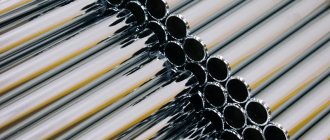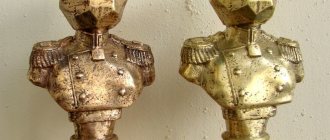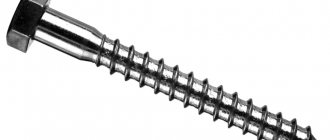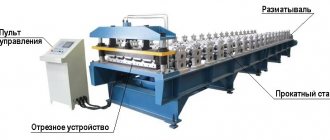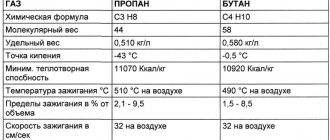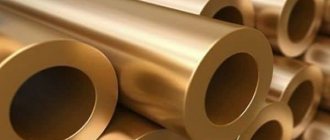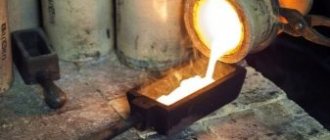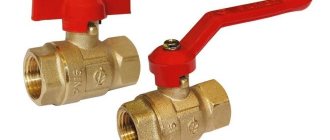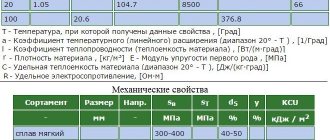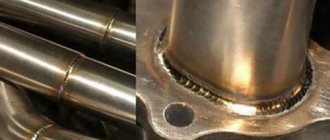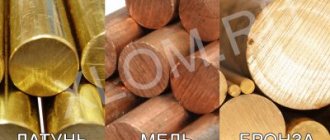Modern housewives use non-stick cookware in their kitchens, made of stainless steel, high-strength plastic, and baking containers made of heat-resistant glass. But brass cookware is the oldest kitchen utensil, standing out for its polished finish, golden luster, aesthetic appearance and useful properties.
Many people still have Soviet cup holders from the USSR era, made of brass. The question is whether it is possible to use such candy dishes, jugs, coffee grinders, plates, samovars today, and whether they are as safe as previously thought.
What are brass utensils made of?
An alloy of metallic zinc and copper resembles gold in appearance, but is much cheaper. Unlike copper, brass is less susceptible to corrosion. Depending on the additives (iron, manganese, lead, tin), the alloy acquires not only yellowish, but also other shades, even greenish.
It is much softer than copper and other metals, so it can be easily rolled and forged, wears out slowly and at the same time is stronger than copper. Of course, we can say that brass cookware quickly darkens and oxidizes, but with proper use and care it will please the eye and be useful in the kitchen for many years.
Brass melts easily. Craftsmen make amazingly beautiful objects from it - trays with finely detailed edges, decorative tea sets, coffee pots, exquisite candy bowls, sugar bowls, sets that are not embarrassing to serve a holiday table with.
Brass kills pathogenic bacteria and fungi, so products in such dishes last longer and their taste does not change. Drinks remain fresh and aromatic. The cup holder is brass, the mug and teapot hold heat well. They keep coffee or tea hot for several hours.
Let's analyze the chemical properties of brass and the influence of all its components.
The designation of all varieties of brass according to GOST is the capital L. For a 2-component alloy, it is followed by the percentage of copper, and the remainder is zinc. An example is L63. For multi-component brass, the first letters of alloying elements are added to L, and their percentage in the composition is added to the number separated by a dash (LS59-1). The amount of zinc is calculated by subtracting the sum of these numbers from 100.
Zinc improves the mechanical properties of brass, increasing its ductility and strength. Its maximum ductility is achieved at 30 percent zinc content. If Zn is more than 39%, the ductility deteriorates, and the strength of the alloy, on the contrary, increases sharply.
Arsenic prevents dezincification of brass when it is in aggressive fresh water at room or elevated temperatures.
Lead enhances the antifriction properties of brass and promotes better machinability of workpieces by cutting. This element acts as a lubricant and reduces wear on cutting tools. The chips become brittle, brittle and do not stick to the cutters or cutters. The surface of the parts is smooth, with the required roughness parameters.
Iron reduces the grain size of brass, increases the hardness of the alloy and increases its recrystallization temperature.
Tin, aluminum and nickel make brass more resistant to corrosion in seawater and air while increasing its strength.
Brass is a copper-zinc alloy. Its components in the presence of an electrolyte solution (water, etc.) form a galvanic couple. Moreover, the more active metal, zinc, is destroyed. The brass dezincification process starts. This is corrosive destruction, accompanied by darkening of the surface of the material and the release of white zinc oxides on it.
Because of this, the use of brass fasteners with mating elements made of steel, bronze or aluminum alloys is not allowed. Those. brass parts can only be connected to each other or using chemically inert plastics (polyamide, etc.). In addition, brass must be stored in warehouses at positive temperatures without significant changes. High air humidity and condensation are not allowed.
| Conformity table of domestic and foreign brands of brass | |||
| ASTM | DIN | GOST | |
| C21000 | CuZn5 | 2.0220 | L96 |
| C22000 | CuZn10 | 2.0230 | L90 |
| C23000 | CuZn15 | 2.0240 | L85 |
| C24000 | CuZn20 | 2.0250 | L80 |
| C26000 | CuZn30 | 2.0265 | L70 |
| C26200 | CuZn33 | 2.0280 | L68 |
| C26800 | CuZn37 | 2.0323 | L63 |
| C27200 | |||
| CuZn40 | L60 | ||
| C35000 | CuZn38Pb5 | 2.0371 | LS59-1 |
| C37100 | |||
| C35600 | CuZn36Pb3 | 2.0375 | LS63-3 |
| C36000 | |||
| C68700 | CuZn20A12 | 2.0460 | LAMsh 77-2-0.05 |
| C37700 | CuZn39Pb2 | 2.0380 | LS59-2 |
| C38500 | CuZn39Pb3 | 2.0401 | LS59-3 |
| C37800 | CuZn30Pb2 | 2.0402 | LS58-2 |
| CuZn20Al2 | LA77-2 | ||
| CuZn38AlIMn2Al1 | LAZ60-1-1 | ||
| CuZn40Mn1 | LMts58-2 | ||
| CuZn40Al1Mn | LMtsA57-3-1 | ||
| CuZn28Sn1 | LO701 | ||
| CuZn38Sn1 | LO62-1 | ||
| CuZn35Pb2 | LS63-2 | ||
| CuZn38Pb2 | LS60-2 | ||
The density of brass, as one of its physical properties, differs little from copper. If the permissible amount of silicon in the alloy is exceeded, the brass will have less density and strength.
Additives to the alloy of manganese, tin and aluminum contribute to an increase in the tensile strength of brass parts. To increase the elongation factor, alloying with iron is necessary.
Due to the significant copper content and the presence of zinc, the electrical properties of brass are excellent. Electrodes for erosion machines are made from it.
The melting points of brass are in the range of 855 – 965 for lead alloys and 885 – 1070 °C for two-component alloys. This value decreases with increasing zinc content.
| Technical comparison of Copper and brass grades L63 and LS59-1 | |||
| Fur. show | Copper | L63 | LS59-1 |
| Electrical resistivity | 0,018 | 0,065 | 0,065 |
| Thermal conductivity | 0,925 | 0,25 | 0,25 |
| Impact strength | 17.0 | 14.0 | 5.0 |
| Tensile strength, shear in MPA | 210 | 240 | 260 |
| Machinability | 18% | 40% | 80% |
Brasses subjected to processing by plastic deformation (rolling, bending, pressing, forging, embossing) are single-phase (L63, up to 30% zinc) or two-phase (40 - 45% Zn). The last category (for example, LS59-1) is excellently processed only in a hot state, and 1-phase - in a cold or heated state. In order to relieve residual stresses inside the part and increase its hardness and strength, products after stamping and similar processing are subjected to heat treatment (hardening) at a temperature of 240 - 260 oC.
Brass is similar in color to bronze. But the latter is attracted to a magnet, while brass is practically not. In addition, brass has a high density and, accordingly, a workpiece made from it with the same configuration is heavier than bronze. When brass parts are heated to 600 - 650 °C (dark red tint), ashen zinc oxide appears on their surface, which bronze does not have. Brass is more ductile at the expense of wear resistance and strength, which are higher in bronze. And bronze resists corrosion better when in contact with salty sea water. Under these conditions, only tin brass of the LO brand is comparable to it. The brass at the fracture site is light with a fine-grained structure, bronze is painted dark brown and has large grains.
The advantages of brass parts are:
- Resistance to corrosion destruction, which manifests itself when products are exposed to air, sea water, most organic and carbon dioxide. Brass is more resistant to oxidation processes than stainless steel.
- Pliability under pressure is characteristic of alloys that do not contain lead. This facilitates their forging and stamping (with or without heating).
- Low thermal conductivity, so when the temperature drops, the properties of the products do not change.
- There is no residual magnetization at the end of exposure to current or electromagnetic field. Therefore, such parts (for example, made from L63A material) do not create interference and are used in devices with increased sensitivity to interference.
Brasses are resistant in the following environments (at normal temperatures):
- air, incl. nautical
- dry steam at low speeds (oxygen, carbon dioxide and ammonia accelerate corrosion)
- fresh water (ammonia, hydrogen sulfide, chlorides, acids accelerate corrosion)
- in sea water at low water speeds
- dry halogen gases
- antifreezes, alcohols, freons
Relatively stable:
- alkali without stirring
Brasses are unstable in the following environments:
- wet saturated steam at high speeds
- mine waters
- oxidizing solutions, chlorides
- mineral acids
- hydrogen sulfide
- fatty acid
The main areas of application of brass products are the chemical, aviation and shipbuilding industries, refrigeration engineering, electrical engineering and energy (contacts, busbars, power transformers), production of high-precision electronic devices and sensors. Brass is used in everyday life for decorating the interior of premises, installing plumbing fixtures and making furniture, assembling acoustic musical instruments, wooden structures in construction, for making information and advertising signs, and souvenirs.
The main brands of brass that are widely used are:
- Two-component (L63, L68, L70, etc.).
- Multicomponent - aluminum (LA77-2, LA 85-0.5, etc.), silicon (LK80-3), manganese (LMts58-2), tin (LOK59-1-0.3, LO60-1), nickel (LN65-5) and lead (LS59-1, LS63-3).
The brass used for the production of fasteners includes the LS59-1 grade. This multicomponent alloy contains up to 60% copper; 42.2% zinc; 1.9% lead and 0.75% impurities. The melting point is 885...895 oC. This type of brass can be easily processed by pressure, but it is mainly used for making parts by cutting. Lead will facilitate drilling, milling and turning of workpieces.
The range of products made from LS59-1 includes:
- Rods of various sections, wire and rolled profiles.
- Strip, plate, sheet and round pipe.
The delivery state of the blanks is soft, semi-hard and hard.
This brass has excellent wear resistance. Therefore, guides for machine tools and sleeves for sliding bearings are made from it. But due to its increased fragility, such material is not resistant to impacts and cannot be used for load-bearing elements.
For the manufacture of decorative furniture fittings, rivets and other fasteners, two-component brass L63 (Cu – 65%, Zn – 38%) with a melting point of up to 910 °C is used.
It is used to produce sheet metal, wire, round pipes and various rods. Thanks to the single-phase structure of the crystal lattice, this alloy is more ductile than other brasses and is excellently deformable using all known technologies (drawing, drawing, stamping, etc.). To maintain decent corrosion resistance, L63 parts produced by cutting are pre-annealed. Such brass products do not oxidize in the environment of liquid and gaseous refrigerants, other halogen-containing substances, aqueous solutions of antifreeze and alcohol, and dry water vapor.
Gift tableware
Brass household items are very beautiful and are often used as gifts. Table sets and dinnerware made from this material, made in an antique style, look elegant and stylish in the kitchen and living room interior, as do smaller items:
- openers;
- ashtrays;
- napkin holders;
- vases;
- skewers;
- gravy boats;
- candy bowls;
- mortar and pestle;
- fruit bowls;
- sandwich makers.
Are copper jewelry worth anything?
Copper jewelry ranges from jewelry to inexpensive items. The type of jewelry you buy determines its cost. Typically, vintage copper jewelry is more valuable than copper jewelry from a street fair or market.
Likewise, gemstones and embellishments in copper jewelry add value. Your copper jewelry may contain gold, silver, or diamond gemstones, which automatically increases its price. Buying copper jewelry from a reputable seller helps you understand whether your jewelry is worth anything.
Kitchenware
Of course, brass home accessories today are not as popular as they used to be, but they are still loved and actively used. Modern utensils are of high quality and have other advantages:
- affordable price;
- rich engraving;
- environmental friendliness;
- corrosion resistance;
- easy care;
- presentable appearance.
Traditionally, brass utensils are used in the East and Asia - in India, Pakistan, Iran, China. Accessories for preparing and serving coffee or tea are especially popular: teapots, teapots, sets, Turkish teapots. An oriental brass tray is an indispensable serving element in some countries.
Video description
Brass. How to determine? Where to look?
Alloy classification
The characteristics of brass often depend on its composition. In a classic two-component compound, copper acts as the main substance, and zinc acts as an additional substance. During production, simple metal is marked with the letter “L” and a number that corresponds to the percentage of non-ferrous metal.
Smooth rolled material Source sect.ru
Multi-component brass consists of a classic alloy with additives. Alloying ingredients are used to improve properties:
- Tin, manganese, aluminum. Reduces oxidative processes and increases the metal’s ability to resist aggressive sea water.
- Lead. Makes cutting of finished products easier.
- Nickel. Increases resistance to alkaline and salty environments.
- Silicon. Strengthens anti-friction properties.
Multicomponent brasses are named by their main alloying ingredient. The alloy is created from copper raw materials, which are fired in furnaces. Zinc in pieces and additives are added to the molten metal to improve its characteristics. After melting and bringing to a homogeneous state, the mass is poured into molds or rolled out.
Pros and cons of the material
“Golden copper” or “eternal metal” is called brass, which stands out among other alloys for its unfading luster. It has undeniable advantages:
- lasts a long time;
- heats food evenly;
- keeps warm;
- presented in handmade products;
- has a beautiful shine and design;
- does not absorb unpleasant odors and does not promote the growth of pathogenic bacteria.
If a special protective coating is not applied to brass objects and utensils, then over time, with frequent contact with water and acidic environments, they begin to oxidize and darken. Unsightly stains appear, so such kitchen utensils need to be cleaned on time.
And another important disadvantage is the high price, especially if we are talking about an old service or a rare table set. But it is compensated by the aesthetic pleasure of contemplating such beautiful kitchen utensils.
It is worth choosing modern brass products that are coated with a special Teflon, ceramic, or bimetallic layer. It has non-stick and wear-resistant properties and allows you to use brass cookware even for frying, stewing, and baking.
TYPES OF STAINLESS STEEL
Stainless steel can be obtained by improving ordinary steel, as a result of enhancing its properties by adding impurities of other metals. Most often, the following reinforcing components are used: copper, nickel, chromium, manganese, titanium, sulfur, silicon and some others. Despite the many options for impurities, it is the percentage of chromium that is fundamental and determines the presence of certain properties of stainless steel. Based on the chromium content in the composition, it is customary to distinguish between five main types of stainless steel.
Austenitic steels. They contain at least 20% chromium and 4.5% nickel.
Duplex steels. Their chromium content reaches 25%, 1.5% nickel and a slight admixture of nitrogen.
Ferritic steels. Up to 29% chromium is allowed in their composition.
Martensitic steels. Their chromium content is insignificant, no more than 13%, and nickel maximum 4%.
Multicomponent steels. Minimal amounts of chromium and nickel and include a wide range of other enhancing impurities.
Manufacturers
Utensils made of bronze, brass, and copper are highly valued in eastern countries, but European companies, for example from Italy, Spain, and Portugal, also produce them. Several of the most popular brands can be found on the Russian market.
India:
- Rajasthan;
- GLOBALINIANTRADE LTD.
Italy:
- Rosaperla;
- STILARS;
- Seletti;
- Cevik Group;
- FRANCO.
Brass kitchen utensils and bronze dishes from domestic and Renaissance brands deserve special attention. They produce luxurious glass holders, which are valued by lovers of rare items and tableware, as well as gift sets of skewers, shot glasses, whiskey glasses, trays, lafittes, beer mugs, glasses for champagne, cognac, and wine.
Each of the products is a real work of art with a unique design. They are sold in branded gift boxes and will certainly become a pleasant surprise and gift for any occasion.
